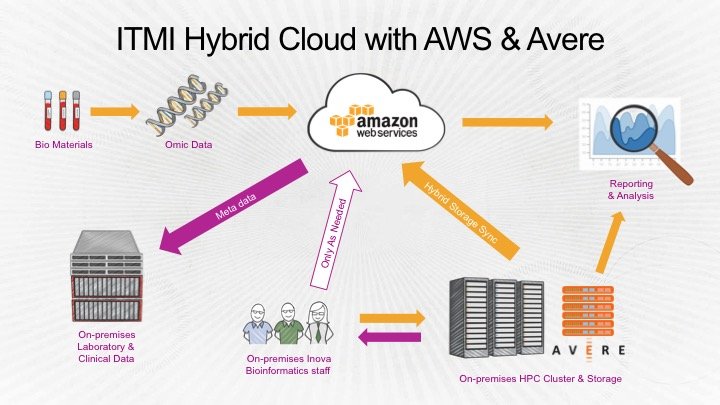Avere Systems combines local network attached storage (NAS) with cloud storage to create a hybrid that enables it to support demanding applications including genome sequencing and CGI rendering for movies.
Describing itself as a NAS optimization company, Avere has an impressive management team, and most of its key staff are PhDs and masters graduates of Carnegie Melon University where the company’s affable and highly engaging CEO Ron Bianchini was a professor for seven years.
Faster NAS
“Our goal is to make NAS go faster,” Bianchini said in a presentation to DCD in Silicon Valley. ”We decided to focus on the go-faster part of storage and let the other vendors deal with the capacity piece. We realized that the cloud guys were going to commoditize storage way before the traditional storage guys were going to do it. Since 2014 our products have been focused on our cloud releases providing public cloud and private cloud capabilities.”
Bianchini says Avere is maintaining the enterprise NAS experience so customers see no difference in performance between public cloud and in house storage. They call this hybrid cloud.
Avere introduced what it called Edge-Core Architecture in 2010. Their software drives all of the high speed storage away from the edge of the network to high-speed flash storage, giving performance and cost improvements.
Bianchini said: “In the past when the customer called in and said they needed faster performance the reaction was – sell them more disk drives. If the customer wanted more storage the answer was – sell them more disk drives!”
Avere Systems’ Edge Filer sits between users and the core repository and handles 98 percent of transactions. Avere Systems advises its customers to buy enough disk space in the Core Filer to hold their entire data set, and enough boxes for the Edge Filer to hold their working set. Effectively Avere’s boxes are flash and the repository is disk. “Write offload is infinite and read offload is a function of how many nodes you buy,” said Bianchini.
Movies and DNA
The top 12 blockbuster movies of 2014 for special effects were all rendered on Avere Systems kit, with one firm using 6,144 cores of render nodes running through a three-node cluster with no bottlenecks, cutting a typical render time from 18 minutes to three minutes.
The tech is also handling more than 7,000 genome sequences at the Inova Translational Medicine Institute (ITMI), in Falls Church, Virginia. ITMI aims to have more than 20,000 sequences in less than two years’ time, using a hybrid cloud built with Amazon Web Services (AWS) and Avere Systems, says Aaron Black, director of Informatics at ITMI.
Black estimates that building traditional on-premise storage infrastructure for petabyte-scale data stores would cost in the tens of millions of dollars. Extremely large file sizes also make data durability a concern - experiencing more than two percent decay per month could jeopardize analysts’ ability to reproduce results.
Black said: “We also have to be able to manage multiple user and business priorities. In the research environment, agility and the ability to rapidly iterate on processes matter most. But on the healthcare side, Inova must ensure HIPAA compliance—that can be a particularly daunting challenge when you have to manage the movement and storage of hundreds of millions of large files that can be hundreds of gigabytes each.”


